Amazon Web Services dominates the cloud market, but size isn’t the same as fit. Many businesses – especially those in bandwidth-heavy, high-risk, or cost-sensitive industries – discover that AWS’s complexity and unpredictable billing don’t align with their specific needs and objectives. That’s where AWS alternatives – cheaper public clouds or private, client-centric custom options enter the picture: focused on delivering predictable costs and operational simplicity.
In this post, we’ll take a closer look at them.
The Cost of “Invisible” AWS Services
On AWS, the compute instance you choose is only the beginning. Costs balloon once workloads start moving serious amounts of data. Streaming platforms, iGaming operators, high-load SaaS, or any big data platforms often find that data egress fees and cross-availability-zone traffic dwarf the price of their virtual machines. Add the premiums baked into managed services like RDS or MSK, and the monthly invoice can jump 30–50% beyond initial estimates.
When AWS Is Still the Right Fit
AWS still makes sense in certain scenarios: if you require niche managed services (like Bedrock’s AI APIs), or you need global elasticity across dozens of regions at short notice. For everyone else – particularly bandwidth-heavy apps, AI/streaming platforms, and high-risk industries – alternatives like Advanced Hosting can offer a stronger balance of cost control, operational maturity, and compliance.
How to Compare AWS Alternatives
When companies start exploring AWS alternatives, they need to align their workloads with the provider’s strengths, check how the costs behave under growth, and ensure the provider can support them with the security, performance, and operations they’ll need over time.
The easiest way to cut through the noise is to use a structured framework. Six dimensions, in particular, separate AWS from its competitors.
Workload Fit
Every cloud has a natural sweet spot. AWS spreads itself across everything, but most alternatives deliberately specialize. If you’re running a predictable operation, you might value transparent pricing more than cutting-edge machine learning APIs. If you’re streaming live sports or running an iGaming platform, bandwidth economics and uptime guarantees become non-negotiable. Here are some of the scenarios where private setups can shine:
- Data-intensive services – analytics, managed databases, streaming
- Media and gaming – encoding, multiplayer, high-throughput delivery
Total Cost of Ownership (TCO)
As we’ve covered in our previous article, on AWS and hypescalers in general, the line item for compute is often the smallest part of the bill. Real costs come from:
- Data egress – sending data out of AWS regions is notoriously expensive.
- Cross-AZ traffic – chatty architectures can rack up charges just by keeping services in sync.
- Managed services – RDS, MSK, and Lambda carry premium markups.
- Support tiers – enterprise-grade support requires enterprise-grade spend.
That’s why smart buyers build a unit-cost model: cost per user, per GB streamed, or per bet placed. We’ve covered the TCO of public clouds vs private ones in our recent post.
See how Advanced Hosting’s private cloud delivers predictable pricing and optimized performance
Operations and Support
Cloud platforms aren’t just about tech – they’re about relationships. AWS is powerful, but customers can’t really expect big providers to offer them a personalized approach and accommodate their exact challenges. They propose a menu – huge, but still predefined. By contrast, many alternatives build their value on human support, including:
- Direct access to infrastructure engineers instead of ticket queues
- Migration consultations on everything from planning to cutover
Growth Path
Finally, any AWS alternative must be judged not just by what it offers today but by how it supports you tomorrow. Questions worth asking are:
- Can I scale without overpaying?
- Do I get enough isolation?
- Is there a path to bare metal when economics demand repatriation?
Provider Snapshots: AWS Alternatives at a Glance
The cloud market is full of vendors, each solving a slightly different set of problems. Some focus on developer simplicity, some on enterprise integration, and some on specialized workloads like AI or streaming. Here’s a closer look at the main AWS alternatives and where they fit.
Advanced Hosting
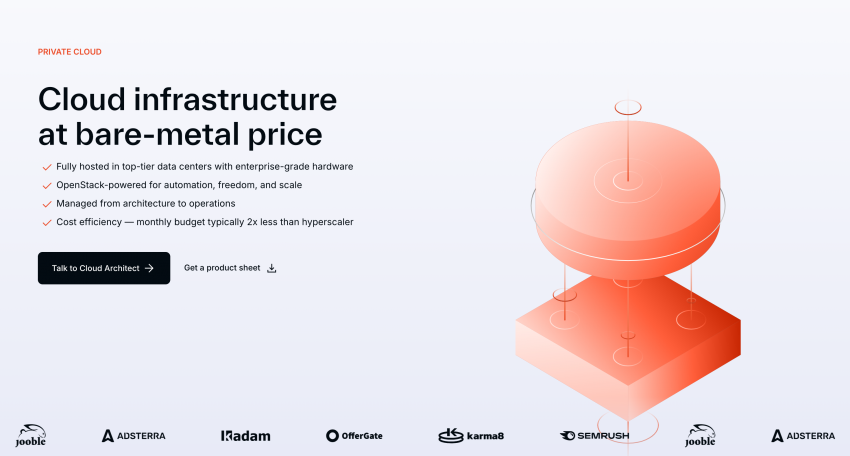
Private cloud + high-density infrastructure
Unlike hyperscalers that spread across hundreds of services, Advanced Hosting is built to solve three very specific AWS pain points: unpredictable costs, operational complexity, and the overhead associated with high-risk verticals.
It works directly with the world’s premier data centers in Amsterdam, Ashburn, and Hong Kong, and builds infrastructures to support demanding workloads – everything from video streaming, to multiplayer gaming, to GPU-intensive AI/ML. Pricing is bandwidth-inclusive and transparent, eliminating the bill shocks that plague AWS customers.
For businesses in regulated industries like iGaming, digital adult entertainment, or financial services, this makes Advanced Hosting not just an alternative, but a safer, more predictable, and much more cost-effective foundation than AWS.
Pros: Transparent, bundled pricing; bare metal GPU and compute options;
Cons: Fewer regions than AWS; narrower catalog of ancillary services.
Best for: Streaming, Funtech, iGaming, SaaS with high bandwidth demands, AI/ML training and inference, and regulated workloads.
DigitalOcean
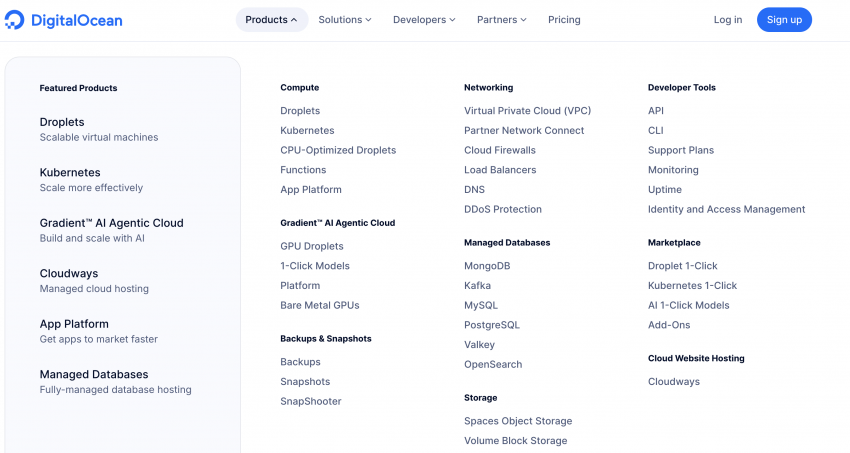
Developer-friendly simplicity
DigitalOcean remains the first stop for many startups and agencies. Its hallmark is simplicity: Droplets (VMs), managed databases, and Kubernetes are easy to deploy and come with transparent monthly pricing. The control panel is intuitive, and the documentation is incredibly detailed for developers.
But DigitalOcean’s strengths are also its limits – it doesn’t cater to enterprises, nor does it offer advanced networking or compliance features.
- Pros: Simple UI and API; generous bandwidth; great documentation.
- Cons: Limited enterprise features; fewer global regions; less depth in networking and compliance.
- Best for: Startups, agencies, developers building SaaS apps or small web platforms.
Vultr
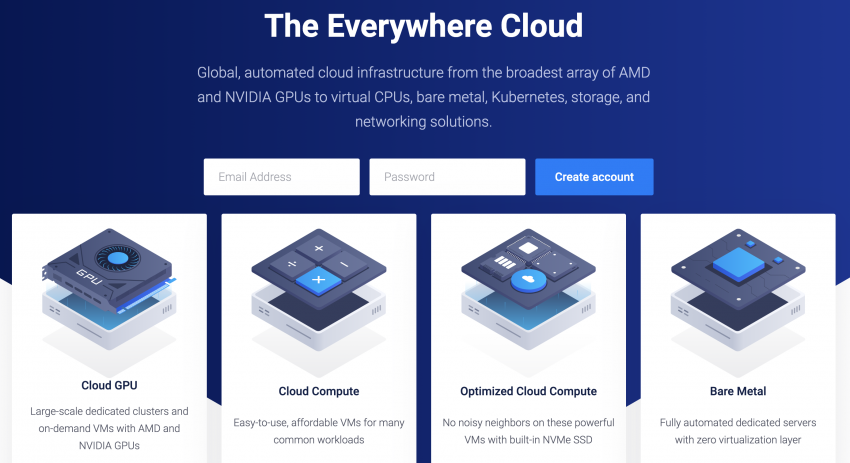
Low-cost global VPS hosting
Vultr competes directly on price and flexibility. With more than 30 locations worldwide and support for custom OS images, it’s attractive for developers who want control and global reach at a low monthly rate.
That said, support is minimal, and compliance features lag behind. Vultr is a strong option for projects where cost control trumps enterprise polish.
- Pros: Large geographic footprint; root access for control.
- Cons: Limited managed services; weaker support; minimal compliance readiness.
- Best for: Developers and SMBs needing an affordable VPS with global reach.
Hetzner
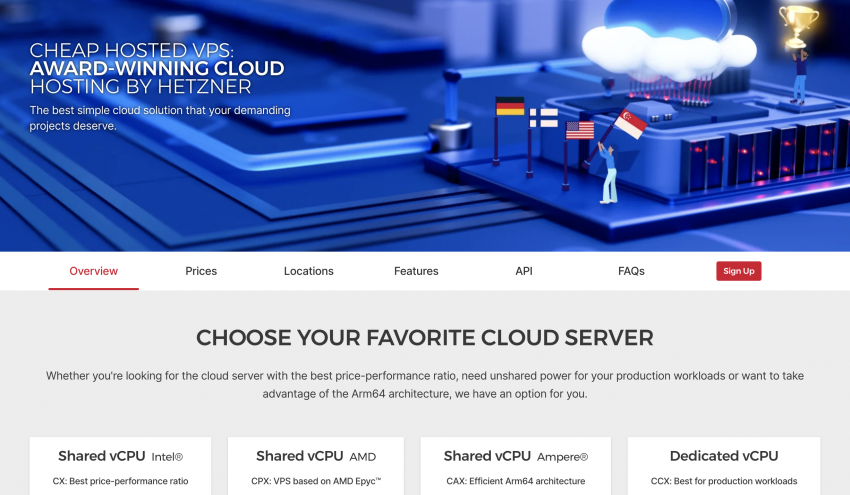
Bare-metal price leader with trade-offs
Hetzner is a giant in the low-cost bare-metal server market. Their standard configurations are some of the cheapest in Europe, making them extremely popular for test environments and cost-sensitive deployments.
The trade-off? Support and reliability. Customers often report poor customer service, limited customization, and hardware/network failures that take days to resolve. If you need customization or faster support, costs jump steeply — often higher than providers like Advanced Hosting.
- Pros: Ultra-low pricing; huge EU footprint; bare-metal availability.
- Cons: Weak customer service; limited customization; lower hardware/network quality.
- Best for: Developers and companies needing cheap, standard configs in Europe.
OVHcloud
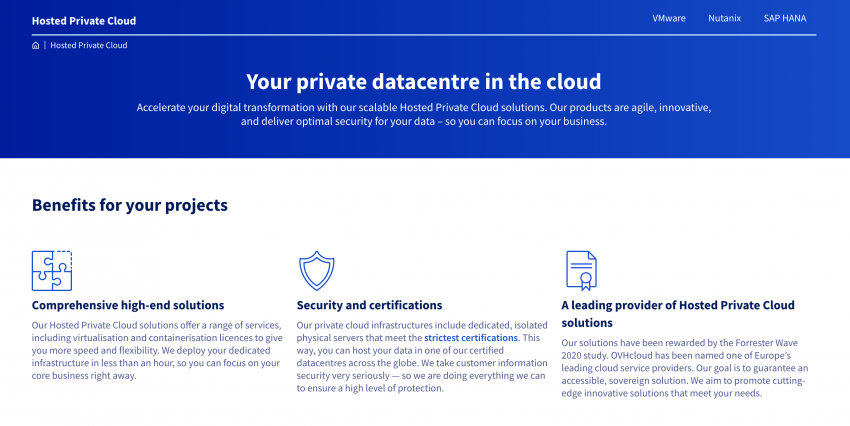
Discount giant with long-term commitments
OVHcloud competes aggressively on price but leans heavily on commitment-based discounts. Customers willing to lock in for years can access strong hardware at steeply reduced rates. Without long-term contracts, OVH pricing is less competitive, and support/service quality is often cited as uneven.
- Pros: Large infrastructure footprint; aggressive long-term pricing.
- Cons: Requires multi-year commitments; inconsistent support.
- Best for: Businesses with stable workloads that can commit long-term to secure discounts.
Scaleway
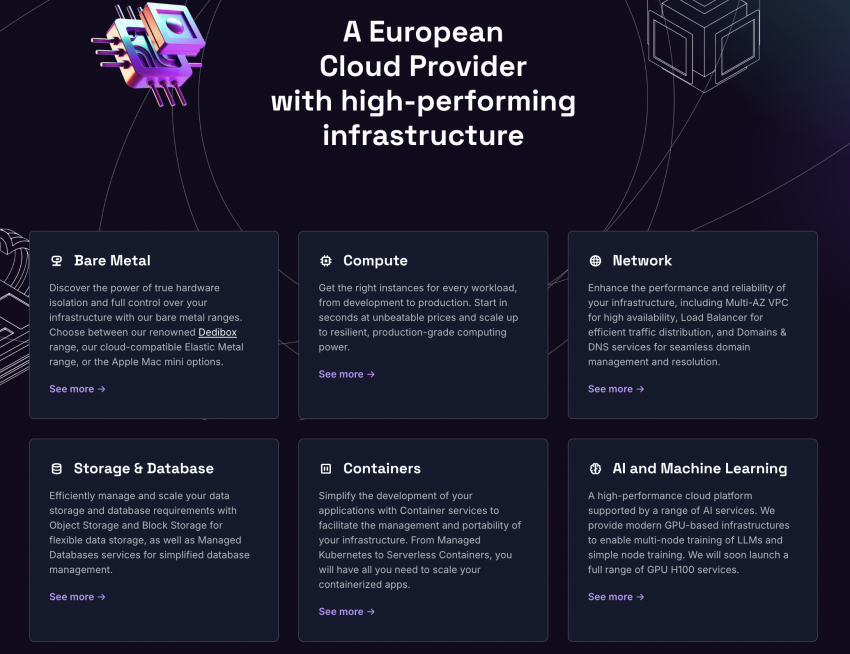
European cloud with a focus on innovation
Scaleway, based in France, is a fast-growing alternative in Europe. It offers Kubernetes, managed databases, and GPU instances with competitive pricing and a strong focus on sustainability and innovation. It’s particularly attractive to EU-based companies looking for GDPR-compliant infrastructure outside the big hyperscalers.
- Pros: Innovative services; competitive pricing; EU compliance focus.
- Cons: Limited global coverage; smaller ecosystem.
- Best for: European startups, SaaS, and AI companies valuing compliance and innovation.
Rackspace
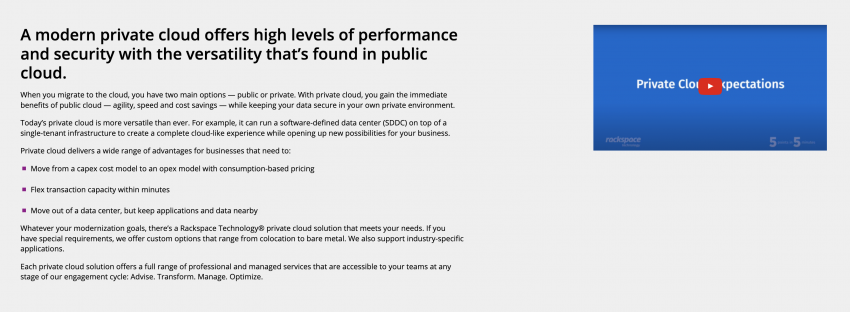
Managed cloud services across providers
Rackspace doesn’t compete directly on infrastructure — instead, it provides managed services across AWS, Azure, GCP, and private clouds. For companies that don’t want to manage their own cloud environments, Rackspace delivers operational expertise, cost optimization, and compliance support.
- Pros: Multi-cloud expertise; strong managed services; good for hybrid strategies.
- Cons: Adds service cost; dependent on underlying cloud providers.
- Best for: Businesses that want outsourcing of cloud management across multiple providers.
Oracle Cloud Infrastructure (OCI)
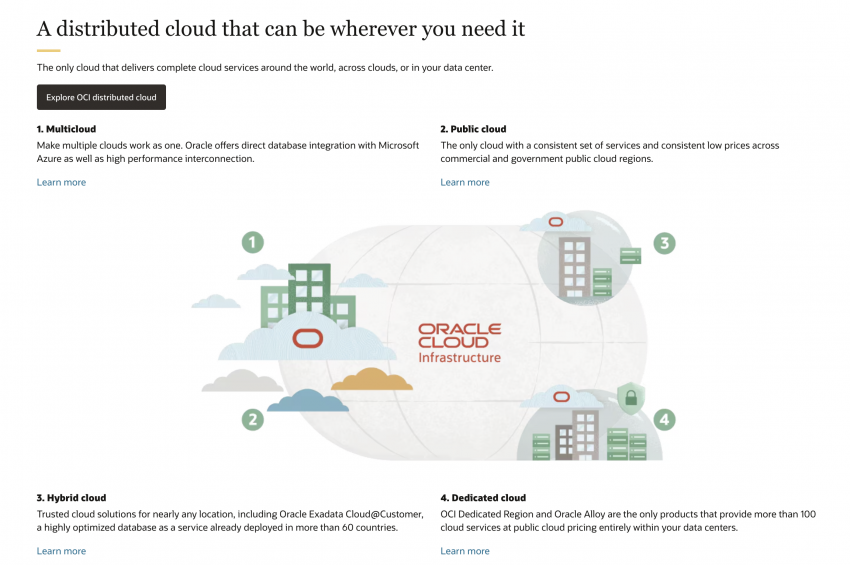
Databases and custom enterprise apps
OCI is Oracle’s bid to keep enterprises in its ecosystem. It offers aggressive pricing for Oracle workloads and impressive scale for database hosting.
Outside Oracle-heavy shops, adoption is more limited, and the learning curve is steep.
- Pros: Very strong for Oracle DB; scalable; performance-focused.
- Cons: Complex interface; opaque billing; less appeal outside Oracle use cases.
- Best for: Enterprises running Oracle databases and ERPs.
Quick Selector: Best Alternatives by Scenario
Now that we’ve looked at the leading AWS competitors individually, the question becomes: which one is right for your specific workload? The truth is that most providers are not general-purpose replacements for AWS. They’re specialists, optimized for particular scenarios. Below, we map out where each alternative shines.
Startups and Digital Agencies
If you’re running a small SaaS company, building MVPs, or managing multiple client projects, you don’t need the overhead of AWS. You need something quick, predictable, and affordable.
- DigitalOcean and Vultr dominate here. Their UIs are straightforward, pricing is transparent, and they include bandwidth allowances that AWS would charge extra for.
- These platforms are excellent for early-stage companies where developer time is more expensive than infrastructure.
But as soon as your workloads become more data-heavy or compliance-driven, these options begin to feel limited.
Streaming, iGaming and Game Development
For video platforms, online casinos, betting operators and large-scale multiplayer games, data transfer is often the single largest cost driver. On AWS, egress charges can dwarf compute costs, sometimes by a factor of three.
- Advanced Hosting builds suitable personalized solutions to fit organizations’ exact needs. Its pricing is predictable, and its high-density infrastructure is tuned for exactly these use cases.
- Customers get clear monthly bills, even when traffic scales sharply.
If bandwidth dominates your AWS invoice, there’s no clearer alternative than Advanced Hosting.
Hybrid Strategies and Cloud Repatriation
Not every company wants to leave AWS behind. Many just want to stop overpaying for workloads that don’t need hyperscaler elasticity. The result is a hybrid strategy: keep burst capacity or niche services on AWS, and move steady-state or bandwidth-heavy workloads elsewhere.
- VMware Cloud enables this for enterprises already running VMware estates.
- Hetzner and OVHcloud provide low-cost bare metal for EU-based workloads.
- Advanced Hosting offers a private cloud with hybrid interconnects – allowing you to keep what makes sense on AWS while shifting cost-heavy services to predictable infrastructure.
For SaaS and streaming companies, this “best of both worlds” often delivers the largest savings without disrupting the entire stack.
Migration Without the Headaches
For many companies, the fear of migration is the only thing keeping them tied to AWS. Advanced Hosting removes that barrier with a repeatable migration playbook:
- Discovery & assessment – mapping workloads, dependencies, and compliance requirements.
- Blueprinting – designing the target architecture.
- Validation – validating workloads in a controlled test.
- Cutover & rollback – executing the move with minimal downtime.
This process has already helped SaaS platforms and iGaming operators cut their AWS bills by up to half – without sacrificing uptime or compliance.
Plan your migration on your own terms – get a consultation with our cloud platform architects
When to Stay on AWS
AWS is still the right answer if:
- You need instant global scale across dozens of regions.
- Your application depends on niche AWS services like Bedrock, Redshift, or MSK with features not easily replicated elsewhere.
- You already have strong in-house AWS expertise and FinOps practices, keeping costs predictable.
But even if this describes you, it must be mentioned that relying on a single provider and a single stack creates serious long-term risk. The deeper you integrate with AWS’s proprietary services, the harder it will be to transition later. And when the need arises – whether due to cost pressure, compliance requirements, or strategic shifts – unwinding from AWS’s custom services will be slow, complex, and expensive.
The lesson: even if you stay on AWS today, you should be designing for flexibility and portability now – otherwise vendor lock-in will make you pay dearly later.
When to Switch
A full migration away from AWS is about timing and readiness. Moving to a new provider makes sense when both your business and your team are prepared for the shift.
- When costs start to bite and optimization becomes a business priority.
- When your company has grown to the point of needing its own infrastructure, instead of relying on AWS defaults.
- When you have a clear IT strategy that includes cost control, performance tuning, and compliance as part of growth.
- When the business is more predictable, with a roadmap that supports building a long-term, scalable architecture.
This is where Advanced Hosting could become the natural next step. It provides predictable economics, tailored private cloud environments, and SRE-led operations — allowing you to run a more mature infrastructure without the overhead and uncertainty of AWS.
When to Go Hybrid
Hybrid is increasingly the middle ground. Keep AWS where it makes sense, and move the workloads that bleed money or create compliance headaches. Hybrid is a smart option if:
- You need AWS elasticity for spiky workloads but want predictable costs for steady-state services.
- You’re experimenting with multi-cloud resilience and don’t want vendor lock-in.
- You want to test migration with low-risk workloads before committing fully.
In these cases, Advanced Hosting integrates seamlessly via private interconnects and hybrid architectures, giving you the best of both worlds: AWS’s elasticity and AH’s cost predictability.
The Practical Reality
For most companies, the “all or nothing” choice is unnecessary. The smarter play is to evaluate workload by workload. Streaming traffic, AI/ML training, and regulated systems almost always migrate well to Advanced Hosting, while niche AWS services can remain in place. Over time, this hybrid approach often evolves into a full switch as confidence grows and cost savings become undeniable.
If you want to stop paying for AWS complexity, Advanced Hosting’s private cloud delivers transparent pricing and significantly lower costs – without compromising on performance.
